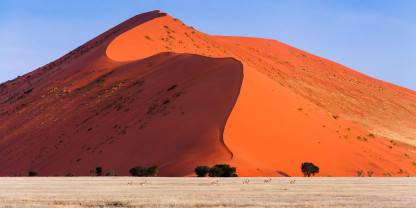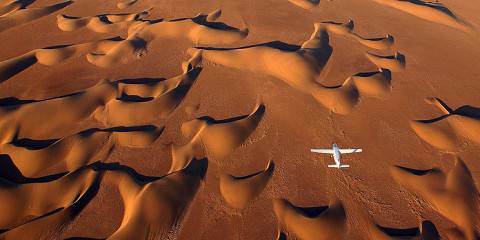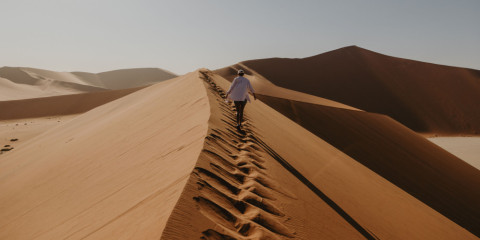Namibia is characterized by spectacular desert landscapes that form a magnificent backdrop for a different kind of safari. Animal populations are smaller in Namibia, but sightings in this sparse setting tend to be hugely rewarding. Not to be missed is Etosha Pan, the largest in Africa and a seasonal wildlife magnet that lies at the heart of superb Etosha National Park.

-
Rates (USD)
- $205 to $853 pp/day
-
Best Time To Go
- May to September (Most parks)
-
High Season
- July to October or November (Etosha and Sossusvlei get crowded)
-
Size
- 824,292km² / 318,260mi²
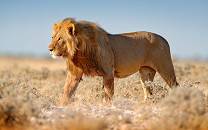
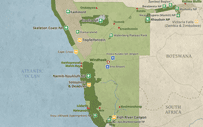
Pros & Cons
- Excellent -based wildlife viewing at Etosha
- Long coastline with marine animals, including seal colonies
- Good road infrastructure and excellent options
- High-end and budget safaris
- Low population and vast undeveloped areas
- Highly photogenic scenery and colors
- Desert habitat doesn't support high animal densities
- Not a great destination to see big cats
Wildlife
The open, arid landscape of Namibia doesn’t support animals in great numbers, but you’ll certainly have no trouble seeing the ones that do live here. These include plenty of wildebeest, zebra, lion and elephant, with large groups gathering in Etosha. The country is particularly good for seeing cheetah, which are widespread. The more secretive black rhino and brown hyena confine themselves to coastal locations.
More about the wildlife
Activities
Guided and self-guided , for the purposes of wildlife viewing and birding, are central to Namibia’s safari experience. However, self-drive safaris may not be permitted in some private reserves. Other possible activities include night drives (in private or community reserves), hiking, , quad biking, horse riding, mountain biking and hot-air ballooning.
Weather & Climate
Namibia has a subtropical desert climate. In the winter, which is the Dry season (May to October), there is barely any rain and afternoon temperatures usually stay below 28°C/82°F. The rain finally arrives a few months into summer, which is known as the Wet season (November to April), accompanied by humidity. It can be fiercely hot in the desert areas, with daytime temperatures approaching 40°C/104°F.
More about the weather and climate
Best Time to Visit
The sunny, virtually cloudless days of the Dry season (May to October) are a very pleasant time to visit. However, from June to August it can get very chilly overnight and in the early morning. The Dry season also happens to be the best time for wildlife viewing, as animals gather close to water and are easy to find.
More about the best time to visit
Premier Parks & Reserves
- Etosha NP – Classic safari
- Namib-Naukluft NP – Scenery, animals scarce
- Skeleton Coast NP – Scenery and marine wildlife
- Bwabwata NP – Wildlife, scenery and wilderness
- Khaudum NP – Wildlife and wilderness experience
- Ongava Private GR – Wildlife and quiet safari trails
- All 20 Namibia Parks & Reserves

